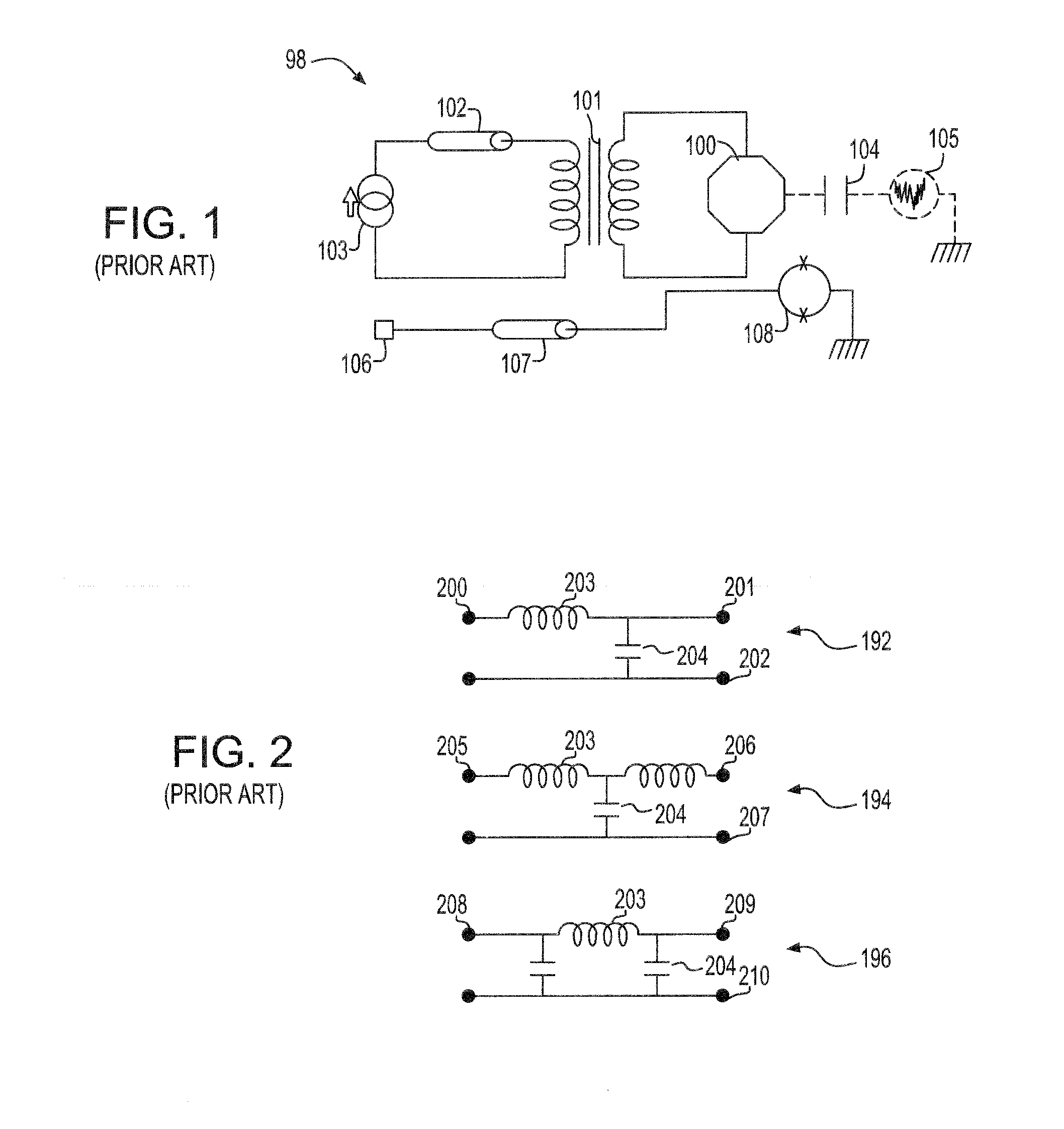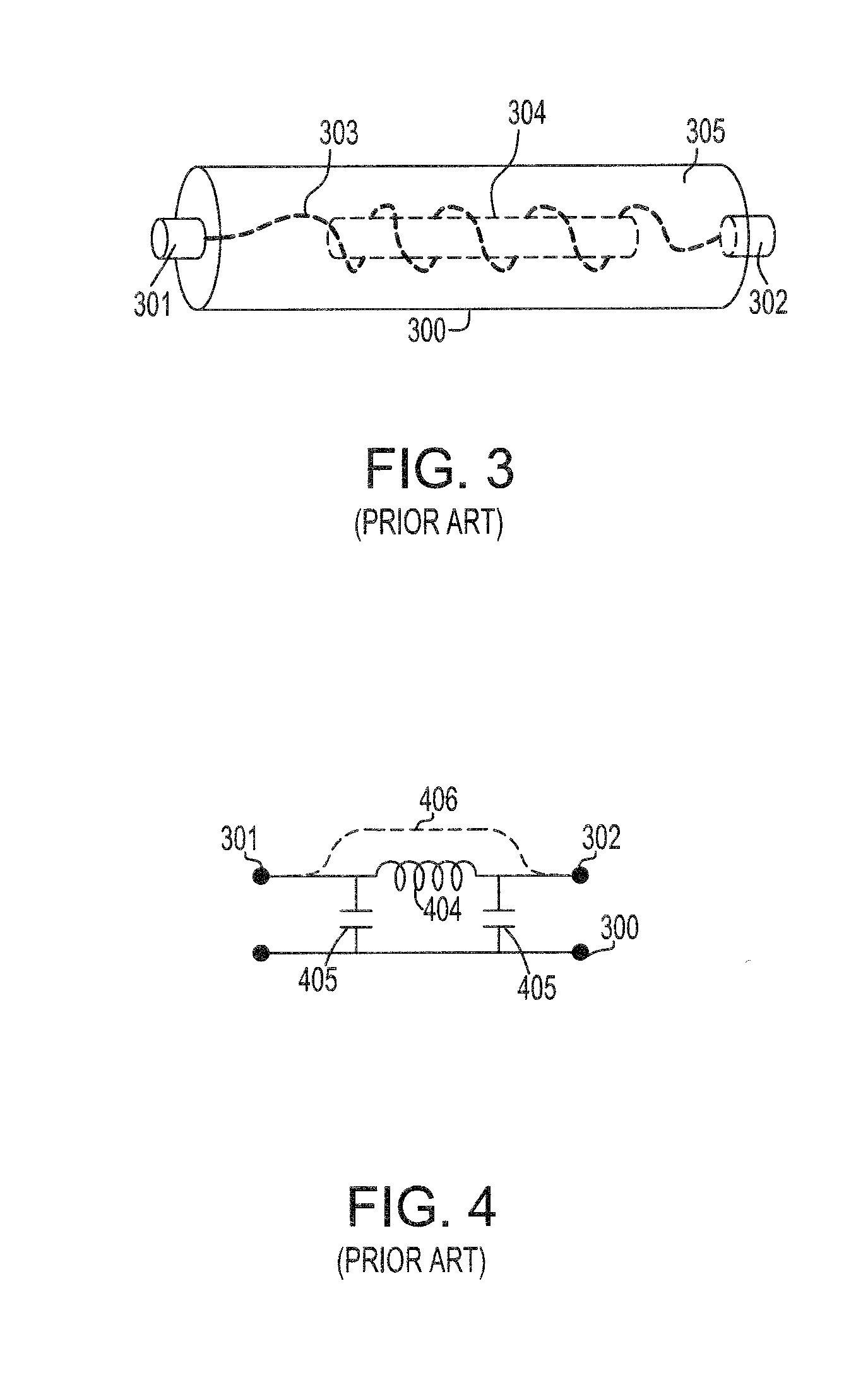Superconducting Low Pass Filter for Quantum Computing and Method of Manufacturing the Same
a low-pass filter and superconducting technology, applied in the field of superconducting superconducting filter devices, can solve the problems of cryogenic systems, premature decoherence of systems, and methods that cannot meet the practical requirements of scalable quantum computers, and achieve high thermal conductivity
- Summary
- Abstract
- Description
- Claims
- Application Information
AI Technical Summary
Benefits of technology
Problems solved by technology
Method used
Image
Examples
Embodiment Construction
[0030]In an illustrative embodiment of the present invention, an apparatus and method of constructing a low-pass filter is provided using superconductive wire coils and metallic powder and a conductive polymer inner filler, embodied as epoxy. Referring to FIGS. 5 and 6, includes a filter assembly 490 which includes containers 502 (or wells) on a support element 492, and a cover 501 extending over the containers 502. The container 502 provides an electrical ground. The filter 490 further includes an input port 500 and an output port 505 at opposite ends of the filter 490. The containers 502 include inductive elements 504, and are potted in the container 502 in a metal powder-filled medium 503. Connection leads 506 connect the input and output ports 500, 505, respectively to the inductive elements 504 and connect the inductive elements 504 to each other.
[0031]Because of the modular nature of the present invention, various configurations (linear, angled, area, etc.) of the filters can ...
PUM
| Property | Measurement | Unit |
|---|---|---|
| particle size | aaaaa | aaaaa |
| time | aaaaa | aaaaa |
| diameter | aaaaa | aaaaa |
Abstract
Description
Claims
Application Information
 Login to View More
Login to View More - R&D
- Intellectual Property
- Life Sciences
- Materials
- Tech Scout
- Unparalleled Data Quality
- Higher Quality Content
- 60% Fewer Hallucinations
Browse by: Latest US Patents, China's latest patents, Technical Efficacy Thesaurus, Application Domain, Technology Topic, Popular Technical Reports.
© 2025 PatSnap. All rights reserved.Legal|Privacy policy|Modern Slavery Act Transparency Statement|Sitemap|About US| Contact US: help@patsnap.com



